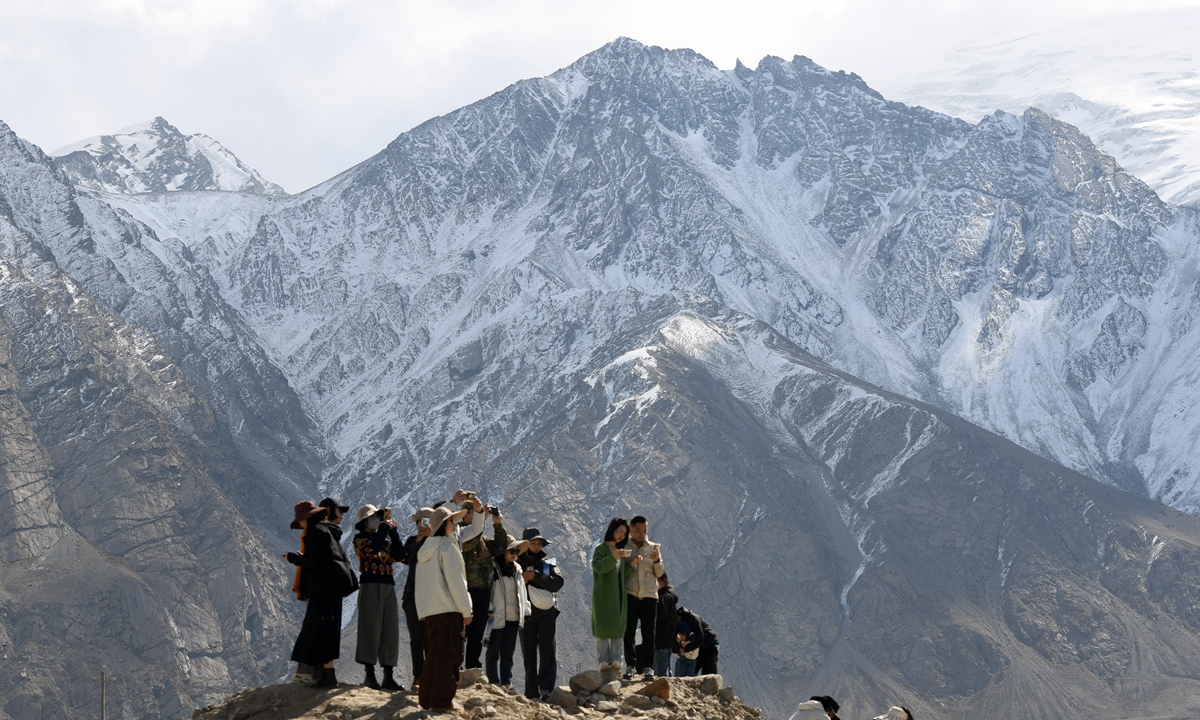
Tourists admire the scenery of mountains in the Taxkorgan Tajik Autonomous county, Kashi of Northwest China’s Xinjiang Uygur Autonomous Region on October 2, 2023. Photo: VCG
Northwest China's Xinjiang Uygur Autonomous Region generated 20.91 billion yuan ($2.91 billion) in tourism revenue during the travel boom over the just-concluded 8-day Mid-Autumn Day and National Day holidays, an increase of 7.86 percent from 2019, according to media reports.
The region received 15.11 million tourists, China Media Group reported on Sunday. The total number of tourists increased by 9.61 percent from 2019 before the pandemic erupted, according to a report from the Xinhua News Agency.
A Beijing-based white-collar worker who recently traveled to Xinjiang told the Global Times that she witnessed crowded travelers in the region before the holidays officially kicked off on September 29. She saw travelers shop around, taste local delicacies, and enjoy traditional folk performances at the International Grand Bazaar in Urumqi on September 28.
Tourists were also seen flooding to local scenic spots, including the Ancient City in Kashgar, the Sayram Lake and other popular destinations.
Local authorities stepped up efforts to bolster already booming travel numbers, with a total of 2,782 various activities being held during the holidays. Meanwhile, the region also launched diverse promotions to ramp up cultural and tourism consumption aided with 94 preferential policies, according to local media reports.
During the holidays, some 99.59 percent of the surveyed tourists said they were satisfied with their stay in Xinjiang, according to Xinhua.
Reviving tourism spending over the just-passed Golden Week is another indicator that China’s economic recovery is gaining pace.
A total of 826 million domestic passenger trips were made throughout the country during the holidays, a year-on-year increase of 71.3 percent and up 4.1 percent from 2019. Holiday tourism generated 753.43 billion yuan ($104.68 billion) in business revenue, up 129.5 percent year-on-year and 1.5 percent increase from 2019, the Ministry of Culture and Tourism said on Friday.
Global Times




